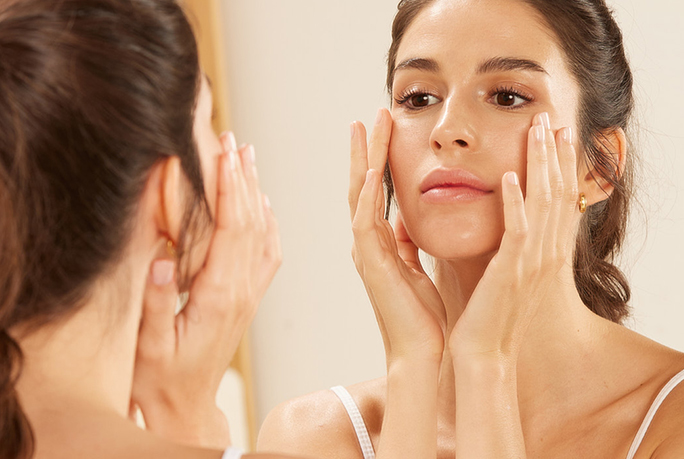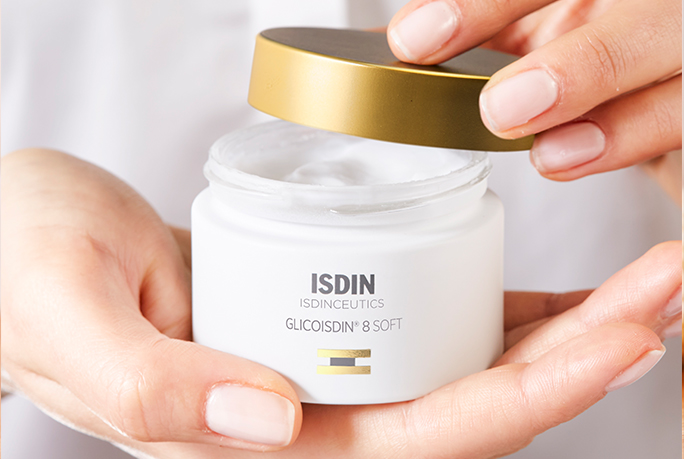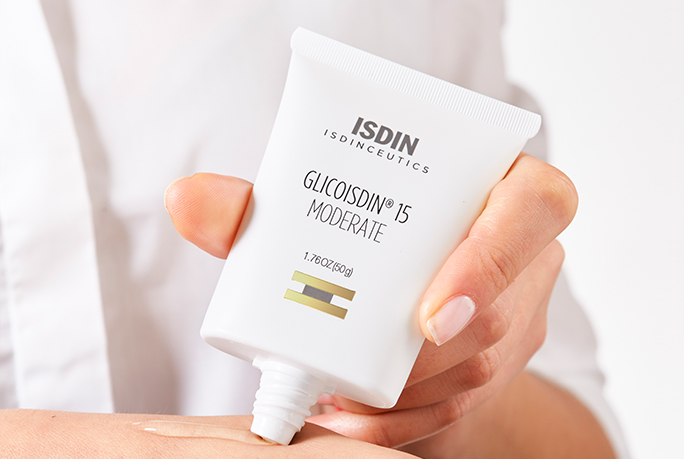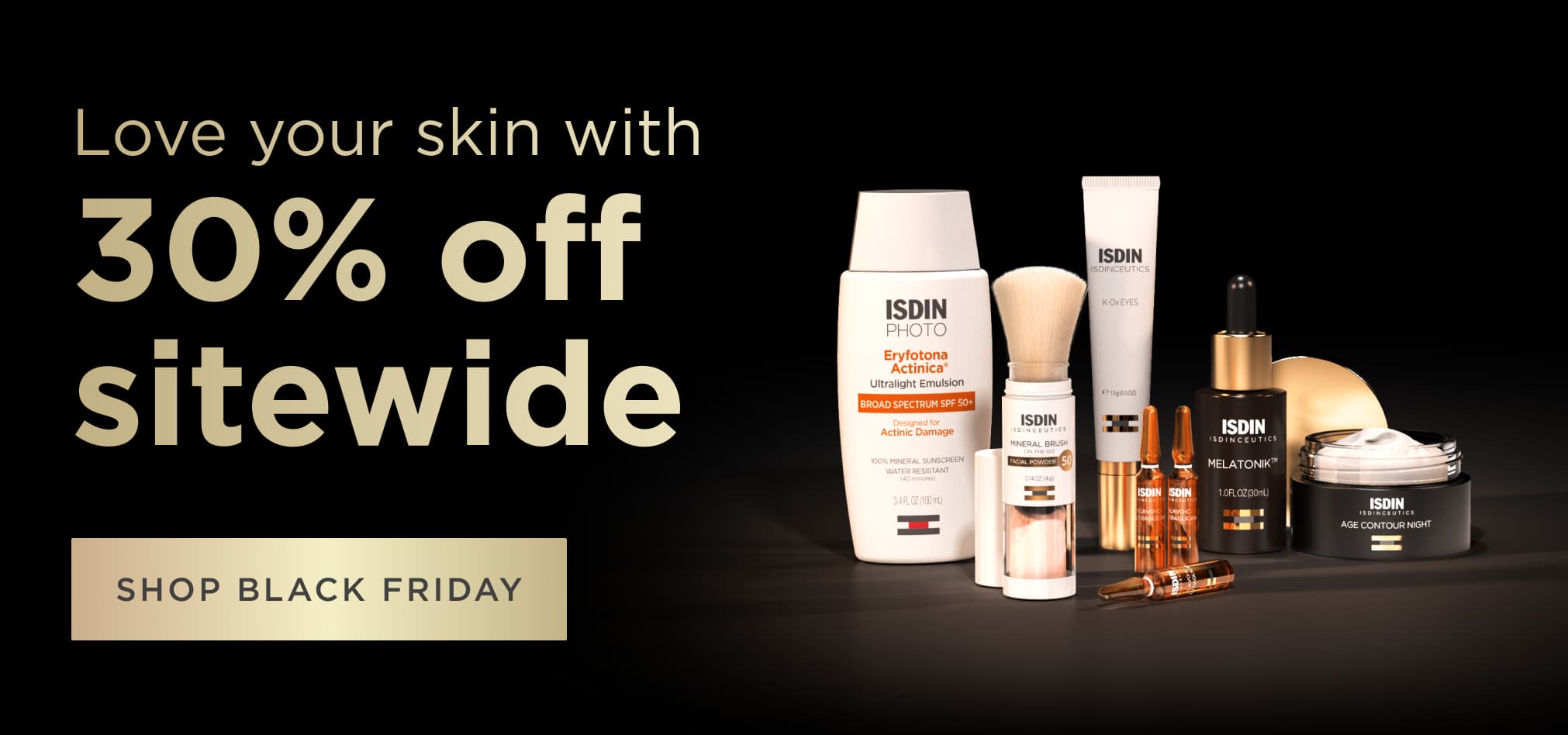[ad_1]
Did you know that our skin renews itself naturally every 28 days? With age, this process slows down and dead cells build up on the skin, which can result in a dull complexion.
But don’t fret — there’s a solution! Exfoliating allows you to compensate for the slowing down of your skin’s cell turnover, and restore its vitality and radiance. Learn everything you need to know on how to exfoliate your face and body:
The benefits of exfoliating
Exfoliation is a skin renewal procedure that helps remove dead cells and take care of your skin barrier, which protects the epidermis from external factors, like UV rays or pollution.
Learn what the benefits of exfoliating are and why it needs to be in your skincare routine:
- It acts on the innermost layers of your skin.
- It promotes collagen production, improving skin elasticity.
- It helps reduce imperfections, such as fine lines, spots or post-acne marks.
- It increases cell turnover, evening out skin tone and restore vitality.

Types of exfoliation
There are two main exfoliation methods. First, physical exfoliation, in which you use abrasive tools or products — like brushes or products with sugar or salt particles, for example. And then there’s chemical exfoliation, which is usually done by using different enzymes of acids, such as beta-hydroxy acids (BHAs) or alpha-hydroxy acids (AHAs).
While both options have their pros and cons, chemical exfoliators are generally a better option, as they penetrate the skin for deeper exfoliation. Also, physical exfoliation tools or products can be too rough for delicate areas of your skin, such as your face.
Beta-hydroxy acids (BHAs)
One of the most effective BHAs is salicylic acid, which is oil-soluble and penetrates the skin at a deep level. It works particularly well for blemish-prone or textured skin, as it soothes inflammation, weakens bacteria, and keeps the pores clean, preventing the formation of new whiteheads and blackheads.

Alpha-hydroxy acids (AHAs)
But what about AHAs? If they sound familiar, you’ve probably heard about glycolic acid, a powerful anti-aging ingredient with excellent exfoliating and restoring benefits, thanks to its ability to penetrate quickly into the skin. You’ll also love that it’s suitable for all skin types — yes, all of them! Other popular AHAs are lactic acid and malic acid.
“Glycolic acid smooths skin with gentle exfoliation, helps with fine lines and wrinkles, and even improves texture. In short, it brightens up dull skin!”
– Dr. Anna Paré, President of Dermatology Consultants
Tips for a perfect exfoliation routine
How often should you exfoliate your skin?
When it comes to exfoliating, the golden rule is to start off in moderation. If you opt for a chemical exfoliant like glycolic acid, try starting with low concentration, and increase as your skin adjusts. And during the first week of use, apply your product every other night. Then move up to nightly in the following weeks. Exfoliating your skin with harsh products or too often (over 2-3 times per week) can end up doing more harm than good.
When’s the best time to exfoliate?
We recommend you exfoliate your skin in the evening to give your protective skin barrier time to regenerate. You should try to exfoliate right after cleansing the skin. Depending on your skin type, you can follow it up with a regenerating night cream to help minimize the chances of irritation. You already know how important it is to apply sunscreen every morning — well, it’s even more so if you’ve exfoliated your skin the night before!

Can you use the same product to exfoliate your face and body?
It’s best if you don’t. Keep in mind that skin on the body is usually thicker and more resistant than facial skin. So it’s a good idea to use products that are specifically formulated for each area.
How to exfoliate your face like a pro
There’s not a one-size-fits-all solution when it comes to facial exfoliation. Make sure you choose a product that works for your particular skin type and that comes in a texture that you enjoy using. If it feels good on your skin, you’ll be more likely to stick with it!
You also want to know the concentration of exfoliating acids your chosen product contains, especially if it’s your first time or you have very sensitive skin. In case you don’t know where to start, here are our top recommendations for each skin type:
Exfoliation for dry or sensitive skin
Glicoisdin Soft Cream is a rejuvenating treatment for all skin types that works particularly well for dry skin. It contains 3.2% free glycolic acid to gently exfoliate the skin and blur fine lines. It also contains ceramide and borage oil to enhance your skin’s elasticity and moisture levels.

Exfoliation for oily or acne-prone skin
Glicoisdin Moderate Gel is suitable for combination or oily and acne-prone skin. It’s formulated with soothing ingredients, as well as with 6.1% free glycolic acid to increase cell turnover, which will unify your skin tone and improve its texture.

Exfoliation for skin with uneven pigmentation
Glicoisdin Intense Gel is perfect for skin that’s oily or uneven in tone. It’s formulated with 9.5% free glycolic acid to exfoliate the skin, combat pigmentation, and blur fine lines. It also contains soothing aloe vera to help prevent irritation.
The final word
So, what are the main takeaways on how to exfoliate your skin? Exfoliate it with specific products for your skin type, moisturize daily, and, of course, make sure you wear sunscreen with a high SPF every single day!
References:
Clinical and cosmeceutical uses of hydroxyacids Barbara A Green 1, Ruey J Yu, Eugene J Van Scott https://pubmed.ncbi.nlm.nih.gov/19695482/ Cosmetic and dermatologic use of alpha hydroxyacids Philipp Babilas, Ulrich Knie, Christoph Abels https://pubmed.ncbi.nlm.nih.gov/22916351/ Glycolic acid peel therapy - a current review Jaishree Sharad https://pubmed.ncbi.nlm.nih.gov/24399880/ Chemical peels in active acne and acne scars Georgios Kontochristopoulos, Eftychia Platsidaki https://pubmed.ncbi.nlm.nih.gov/28274356/ Topical urea in skincare: A review Leonardo Celleno https://pubmed.ncbi.nlm.nih.gov/30378232/
[ad_2]


